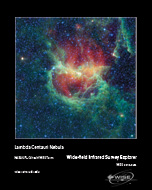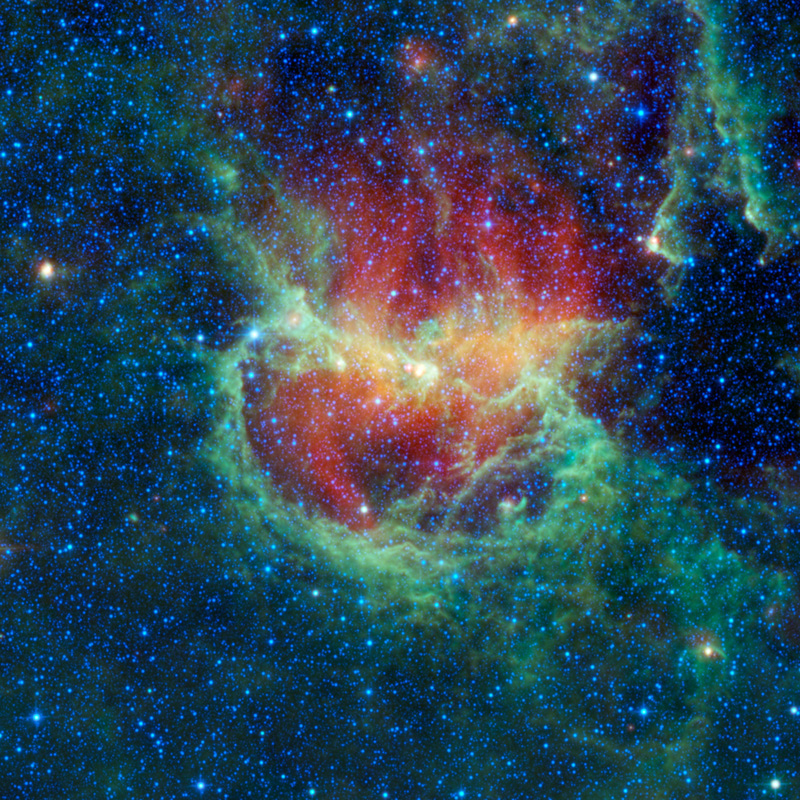



|
Dec 21, 2010 - Chasing Chickens in the Lambda Centauri Nebula This image from the Wide-field Infrared Survey Explorer, or WISE, is an infrared view of a star forming cloud in our Galaxy called the Lambda Centauri nebula, also known as the Running Chicken nebula. The nebula, cataloged as IC 2944, is about 5,800 light-years from Earth and home to a new cluster of stars born from the cloud nearly 8 million years ago. The hottest members of the cluster produce enough ultraviolet radiation and strong winds to both ionize and excavate the cloud. The ionized gas glows in visible light, but in infrared light we see the dust in the cloud warmed by the very same radiation. The dust glowing red is the coolest material seen in this image and is composed of metallic dust grains. The greenish components in the image are warmer dust grains composed of smog-like materials. The large green ring-like structure near the middle of the image is some 77 light-years across and is formed by the combined winds of the stars in the clusters blowing back the material from which they were born. The nebula gets its common name from its appearance in some visible light images to a running chicken. It is also called the Lambda Centauri nebula because it appears to surround the bright star Lambda Centauri. Lambda Centauri is one of the brightest stars in the constellation Centaurus. The brightest stars in the sky are named based on the constellation they are in. For example, the brightest star in the constellation Centaurus is Alpha Centauri, the next brightest star in that constellation is Beta Centauri, and so forth. Lambda Centauri is therefore the 11th brightest star in the constellation Centaurus. It is not so bright in infrared light, however. In this WISE image, it appears as the dimmer, lower, and bluer of two bright stars in the upper right-hand corner of the image. It is a blue giant star about 410 light-years away. So, in fact, Lambda Centauri is much closer to Earth than IC 2944 and has nothing to do with the nebula at all. This image is a four-color composite created by all four of WISE’s infrared detectors. Color is representational: blue and cyan represent infrared light observed at wavelengths of 3.4 and 4.6 microns, which is mostly light from stars. Green and red represent light observed at 12 and 22 microns, which is mostly light from warm dust, with red indicating temperatures lower than green. Image Credit: NASA/JPL-Caltech/WISE Team |
|||||||||||||||||||
|
||||||||||||||||||||
|
|||

